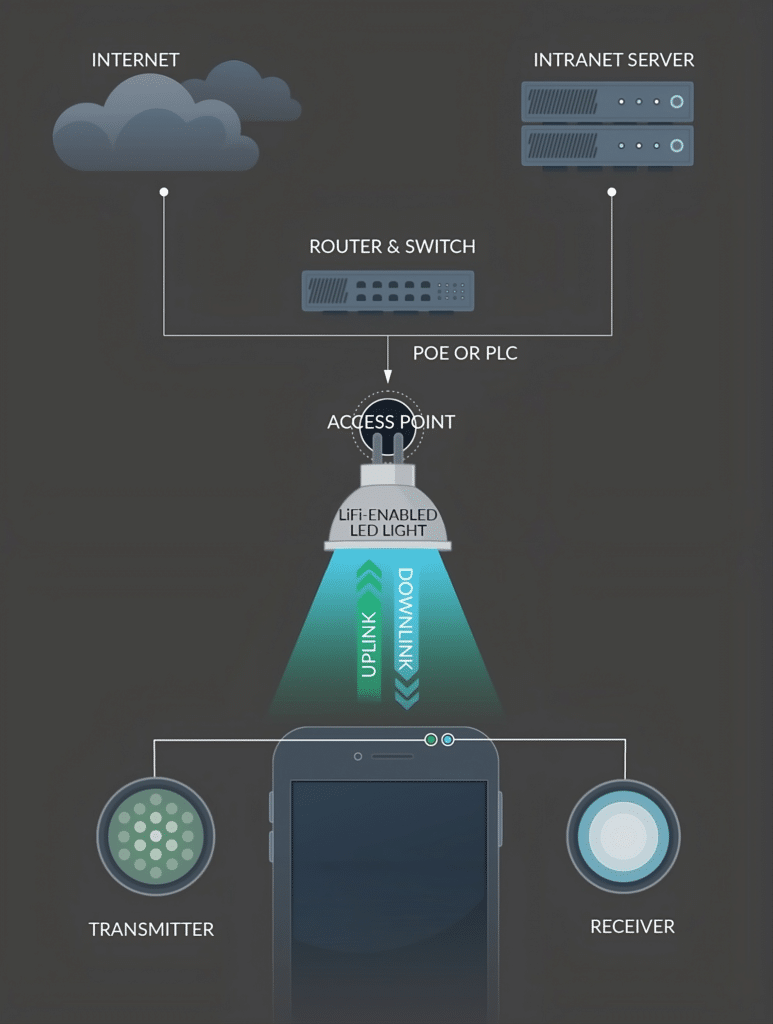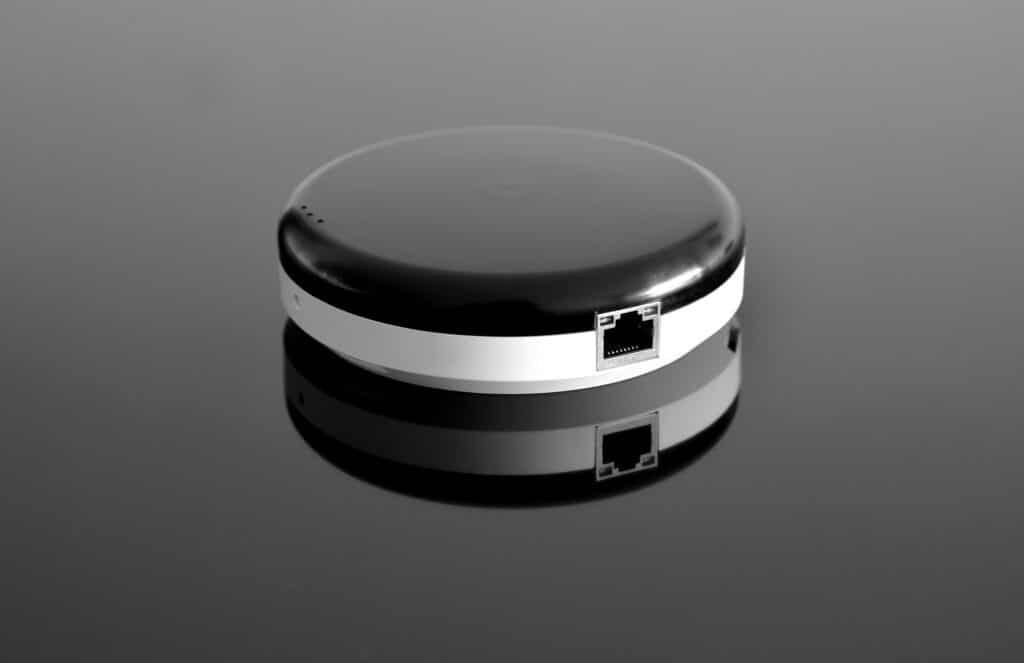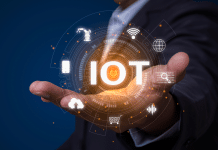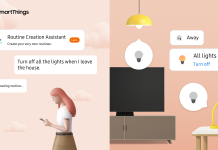
Jeroen van Gils is the Founder and Managing Director of LiFi.co, a prominent advocate for the advancement of LiFi technology. Additionally, he leads Morex, a digital solutions enterprise. Driven by a profound enthusiasm for LiFi technology, Jeroen is resolutely committed to unveiling its diverse potential and reshaping our approach to connectivity. In an exclusive conversation with Smart Home World, he delves into the intricacies of this innovative technology and its prospective applications.

Can you briefly explain what Li-Fi technology is and how it differs from traditional WI-FI?
Li-Fi, short for Light Fidelity, is a wireless communication technology that utilizes visible light from LED bulbs to transmit data, rather than the radio waves used by traditional Wi-Fi. Unlike Wi-Fi, which operates within the crowded radio frequency spectrum, Li-Fi operates within the vastly unoccupied visible light spectrum, providing greater bandwidth and less interference.
What inspired you to develop and champion Li-Fi technology?
Our journey towards Li-Fi technology began when we realized the enormous potential of the largely unexplored visible light spectrum. The digital age demands faster, more reliable, and secure internet connectivity. Wi-Fi, although efficient, faces limitations in meeting these rising demands. Li-Fi seemed like a promising solution to these problems. Our aim is not just to market and sell Li-Fi technology, but to collaborate with leading Li-Fi companies to optimize its benefits for a wide range of users, and to ultimately help transform the world’s digital landscape.
How does Li-Fi work, and what are the main components required for its implementation?
Li-Fi works through a system of light bulbs fitted with a chip that modulates light imperceptibly for optical data transmission. These light signals are received by photoreceptors on the user’s device, which convert the light signals back into electronic data. The main components for a Li-Fi setup include a high-speed Internet connection, a Li-Fi-enabled LED light bulb, and a device equipped with a Li-Fi receiver.
Li-Fi operates using visible light. Are there any limitations or challenges in terms of interference or line-of-sight requirements?
Yes, there are certain limitations to Li-Fi. As it uses visible light for data transmission, it cannot pass through walls or other opaque objects. This requires a line-of-sight operation for optimal performance. Also, extremely bright light in the environment might cause interference with the signal. However, these challenges also give rise to benefits, such as improved security and the elimination of radio frequency interference.
What are the key advantages of Li-Fi over Wi-Fi in terms of data transfer speed, security, and capacity?
Li-Fi has several key advantages over Wi-Fi. First, Li-Fi can theoretically achieve much higher data transfer speeds due to the wider bandwidth of the visible light spectrum. Second, as light cannot pass through walls, it is much more secure than Wi-Fi as the chances of data leakage are significantly reduced. Lastly, Li-Fi also promises improved capacity, as more data can be transmitted over the same area due to less signal interference.

Could you explain the concept of “Li-Fi Everywhere” and its potential applications in various industries?
The concept of “Li-Fi Everywhere” is about making high-speed, secure, and reliable Internet access universally available via every light source. This could have far-reaching implications across various industries. For instance, in aviation, Li-Fi could provide faster in-flight entertainment. In the automotive industry, Li-Fi could enable V2V communication, enhancing traffic management and safety. Hospitals could use Li-Fi for secure transmission of sensitive patient data.
The new 802.11bb standard has been introduced for Li-Fi. What are the key features and improvements it brings compared to previous standards?
The 802.11bb standard, introduced by IEEE, outlines specific requirements for Li-Fi technology and aims to standardize its implementation. It allows for faster data transmission speeds, improves signal efficiency, and offers better interoperability between devices. It also specifies that Li-Fi should operate in a manner that doesn’t interfere with existing lighting requirements, ensuring seamless integration of Li-Fi technology into existing infrastructures.
How do you envision the future adoption and integration of Li-Fi technology in our daily lives?
In the future, I envision Li-Fi being integrated into every aspect of our daily lives, from our homes to our workplaces and public spaces. Imagine your streetlights, home lights, and car headlights not only providing illumination but also high-speed Internet connectivity. The possibilities are endless and the potential for positive impact on productivity, efficiency, and quality of life is immense.
Are there any ongoing research or development efforts to further enhance Li-Fi technology or explore new applications?
Numerous research efforts are ongoing to improve Li-Fi technology and explore new applications. For instance, scientists are looking into ways to overcome the line-of-sight limitation of Li-Fi, and efforts are being made to integrate Li-Fi technology into next-generation devices and infrastructures.

LiFi technology has gained attention in areas such as smart cities, healthcare, industrial automation and residential segments. Could you highlight some specific use cases or success stories?
Li-Fi is playing an integral role in several fields. In smart cities, Li-Fi can provide a seamless, high-speed internet network through streetlights. In healthcare, it offers secure, high-speed data transmission for critical applications like remote surgery. Industrial automation can leverage Li-Fi for reliable machine-to-machine communication. For residential segments, Li-Fi can offer a new level of connectivity, with each light bulb potentially serving as a data access point.
What are the main challenges or barriers that need to be addressed for the widespread adoption of Li-Fi technology?
There are several challenges that need to be addressed for the widespread adoption of Li-Fi. These include improving the range of Li-Fi signals, making the technology compatible with existing devices and infrastructures, educating the public about its benefits, and reducing the costs associated with implementing Li-Fi technology.















